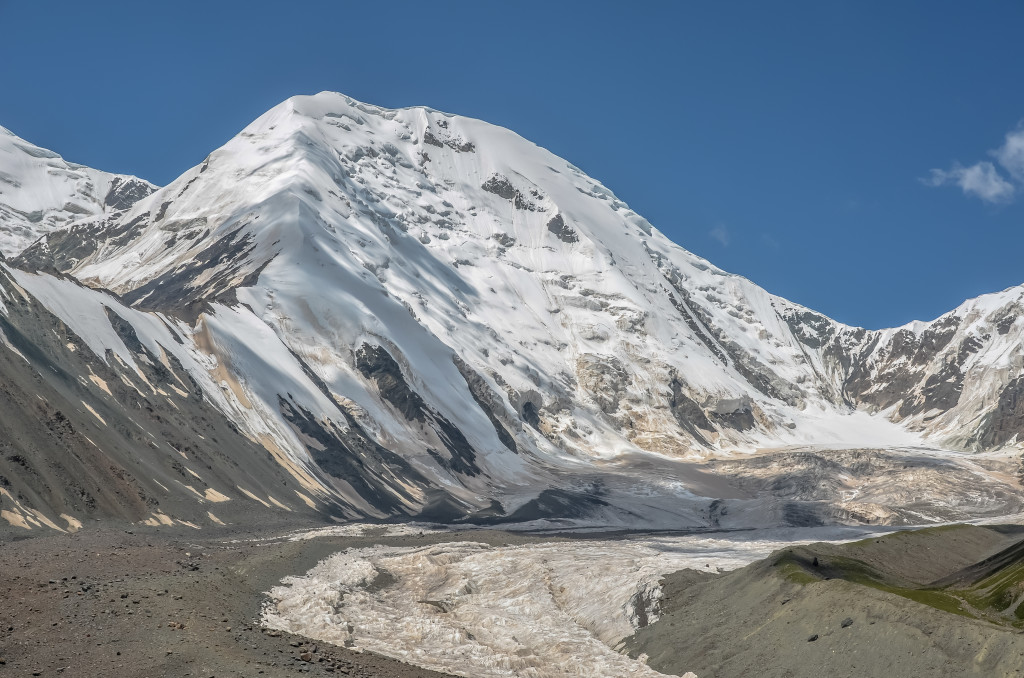
Amnye Machen is one of Tibet’s main holy mountains. It is located in Golok prefecture in the Amdo region (modern day Qinghai). This is a fantastic glacier mountains that offers great trekking!
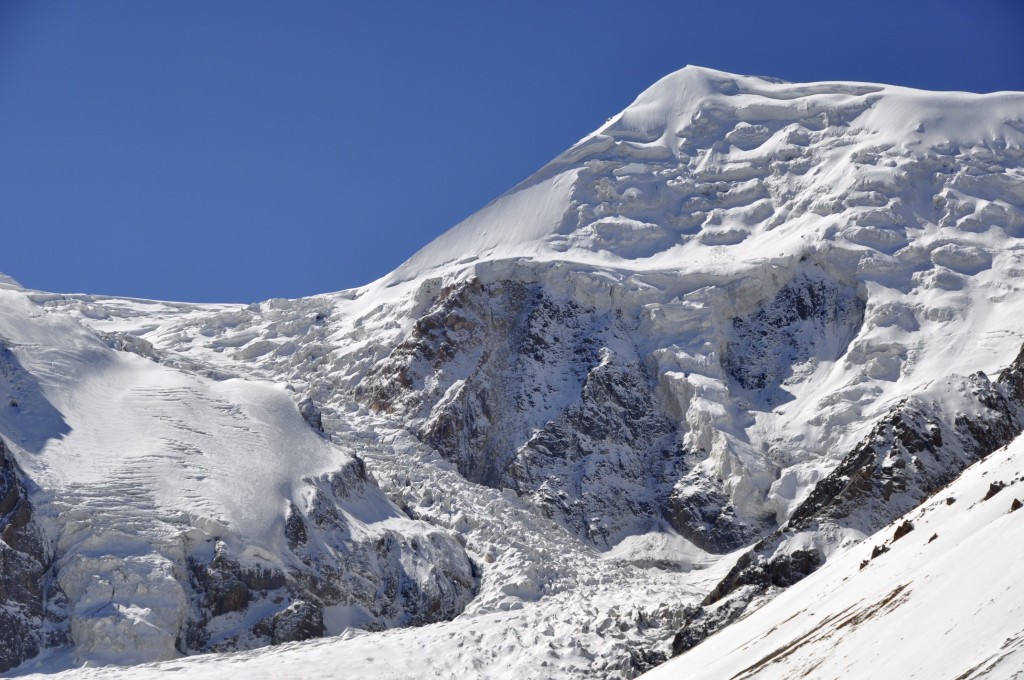
Read through this update for information on a slightly different route around Amnye Machen: Update on Amnye Machen
Amnye Machen ཨ་མྱིས་རྨ་ཆེན་ is the highest mountain in the Amdo region of Tibet and is considered to be one of the holiest mountains in Tibetan Buddhism. It is located in the remote and rugged Golok prefecture in Machen county མགོ་ལོག་ཁུལ་རྨ་ཆེན་རྫོང་ located in southeast Qinghai province. Amnye Machen is part of the Kunlun Mountain Range with the highest point of the mountain reaching to 6282 meters. In 1929, botanist/explorer Joseph Rock traveled to the region and incorrectly measured the mountain at more than 9000 meters. For several years, some people thought that Amnye Machen was higher than Everest. Though by the late 1930’s most people agreed that the mountain was probably under 6400 meters, it wasn’t until the mountain was summited in 1981 by an American team that the exact height was determined.
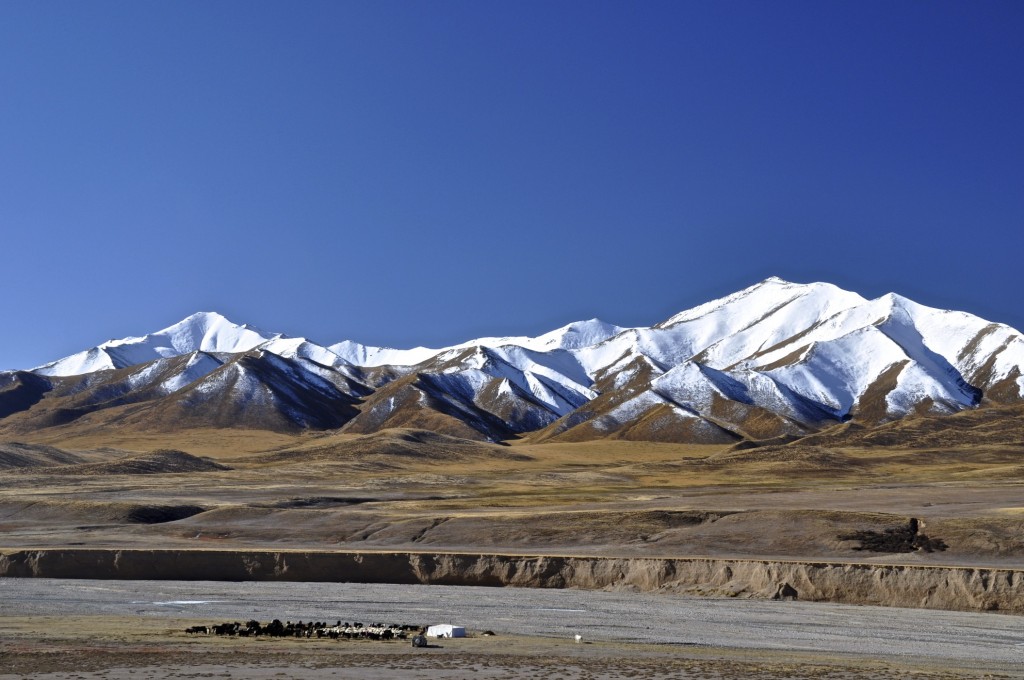
Nomads along the Amnye Machen range
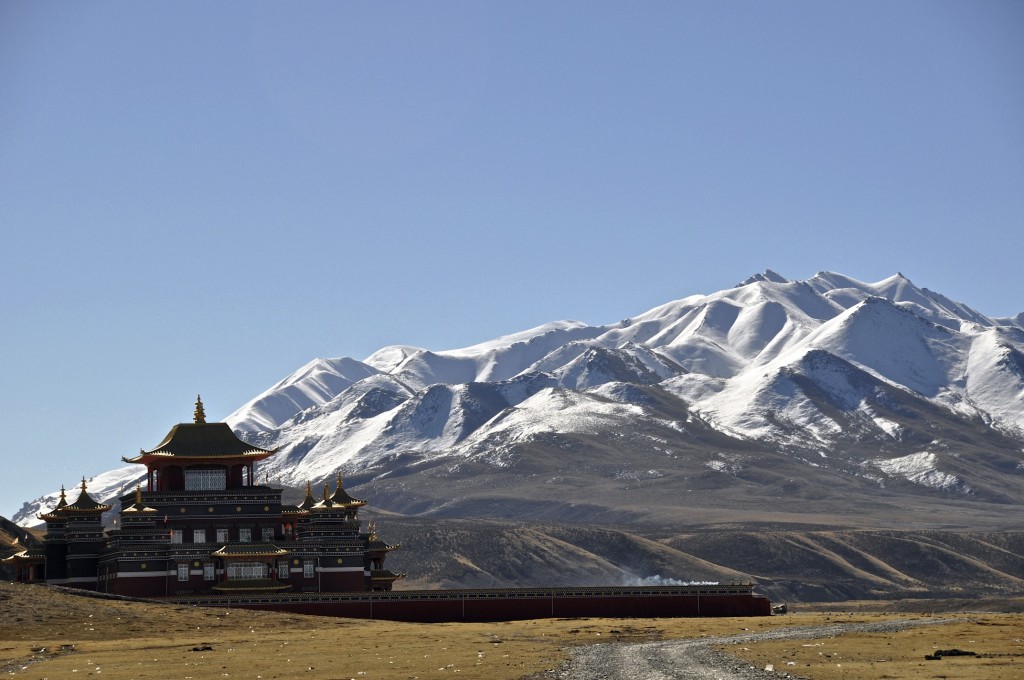
Monastery on the north side of the mountain
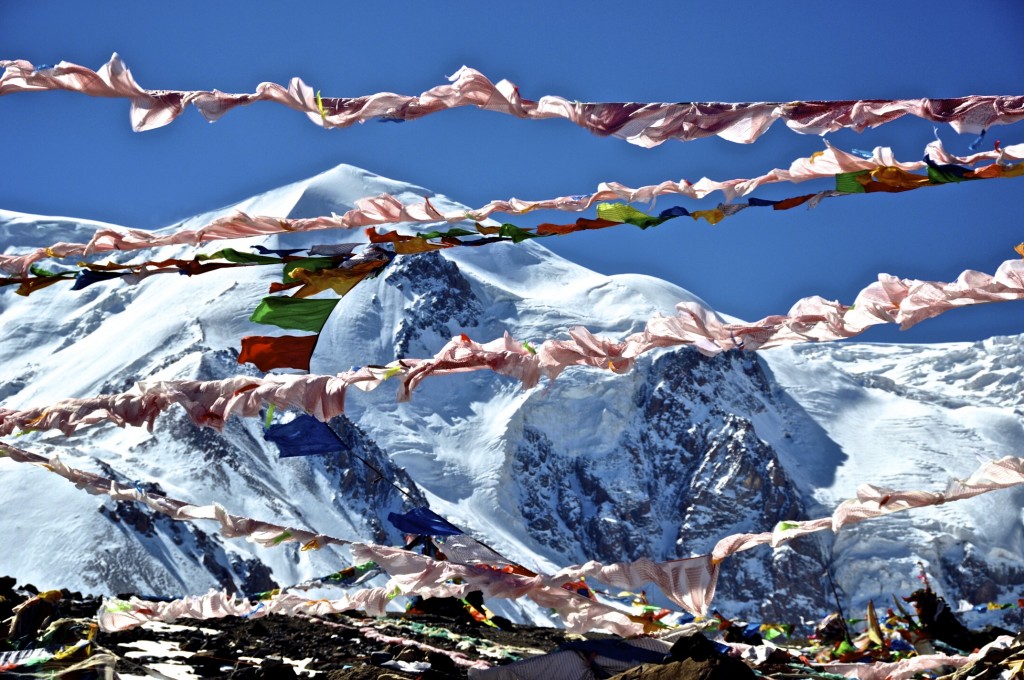
Prayer flags across a high pass on Amnye Machen
There is a 6 to 9 day kora around Amnye Machen that is popular with Tibetan Buddhist pilgrims. Several groups of foreigners also make the trek around the mountain. The traditional starting point of the kora is located near the village of Chuwarna, known as Xue Shan in Chinese, at a large white stupa. This is the place where most Tibetans begin the clockwise journey around the mountain. Beginning from the traditional starting point, the trek around the mountain is about 105 kilometers in length, ending back near the stupa at the starting point.
Another starting point of the trek is outside the small village of Tawo Zholma, known in Chinese as Xia Dawu. From here, the trek follows a motorable dirt road along the northeast face of the mountain for around 58 kilometers. About 2 1/2 kilometers before reaching the village of Chuwarna (Xue Shan), the road leads south for about 20 kilometers. After about 12 or 15 kilometers, the motorable road ends and turns into a trekking trail. The trail then leads northwest towards Tawo Zholma (Xia Dawu) along the southwest face of Amnye Machen. In total, starting and ending the trek in Tawo Zholma covers about 132 kilometers.
Most of the trek is between 4150 meters and 4620 meters. There are two high passes along the kora, one on the north side and one on the south side of the mountain that each rise a little over 4600 meters. During the summer months of July and August, rivers can be quite high and flow fast, especially if there has been recent rain or snowfall.
For a detailed map of the trek around Amnye Machen, go to the following map, which was created by Jon Aldridge (thank you Jon for the great map!!):
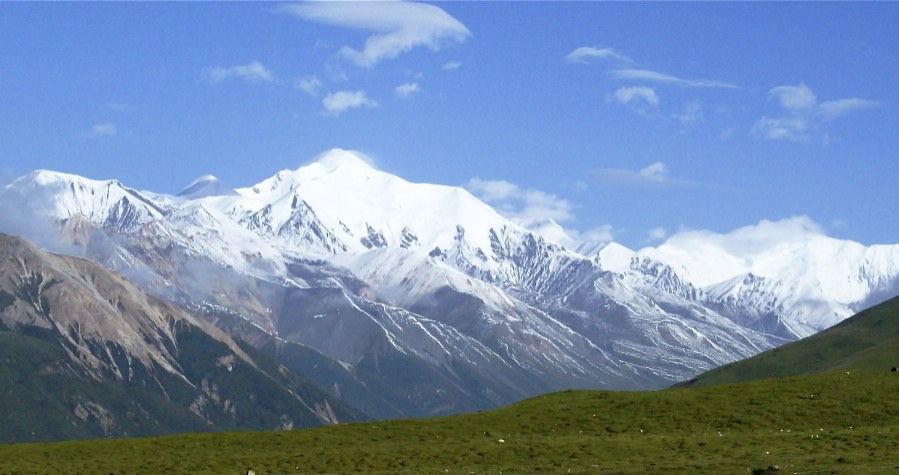
Amnye Machen viewed from near Chuwarna (Xue Shan)

Nomad Tibetans around Amnye Machen

Pilgrims prostrating along the kora of Amnye Machen
Getting to Amnye Machen is not very easy as no public transportation goes to the mountain. There are 2 ways to get to the mountain. The first is to take a public bus from Xining to Machen རྨ་ཆེན་, the capital of Golok prefecture. Machen, known in Chinese as Dawu, is located 440 kilometers southwest of Xining. There are multiple buses per day that go between these two places. In Machen, you will need to either take a seat in a shared mini-van taxi or hire a vehicle to take you a further 80 kilometers to the small village of Chuwarna (Xue Shan in Chinese) where you can begin the trek. If you are not wanting to trek, but want a good view of the mountain, you will need to travel an additional 30 kilometers past Chuwarna (or 110 kilometers from Machen/Dawu) up to the high pass where the glacier comes close to the road. You can make the 220 kilometer roundtrip journey from Machen/Dawu to the high pass where the glacier is in one long day.
The other option is to take a public bus from Xining to Mado རྨ་སྟོད་ (Maduo in Chinese), but get off the bus in the small town of Tsogyen Rawa (Huashixia in Chinese). Tsogyen Rawa is 415 kilometers southwest of Xining. There are multiple buses per day from Xining to Mado, but remember to get off the bus in Tsogyen Rawa/Huashixia, which is about 75 kilometers north of Mado. If you decide to go to Mado first, there are numerous shared mini-van taxi’s that depart each day to Tsogyen Rawa/Huashixia. From Huashixia, you will have to hire a shared mini-van taxi to take you the 48 kilometers to Tawo Zholma/Xia Dawu to begin the trek or 75 kilometers out to where the glacier comes close to the road at the high pass. The road past Tawo Zholma/Xia Dawu can be extremely rough and even impassable after heavy rains or heavy snows.
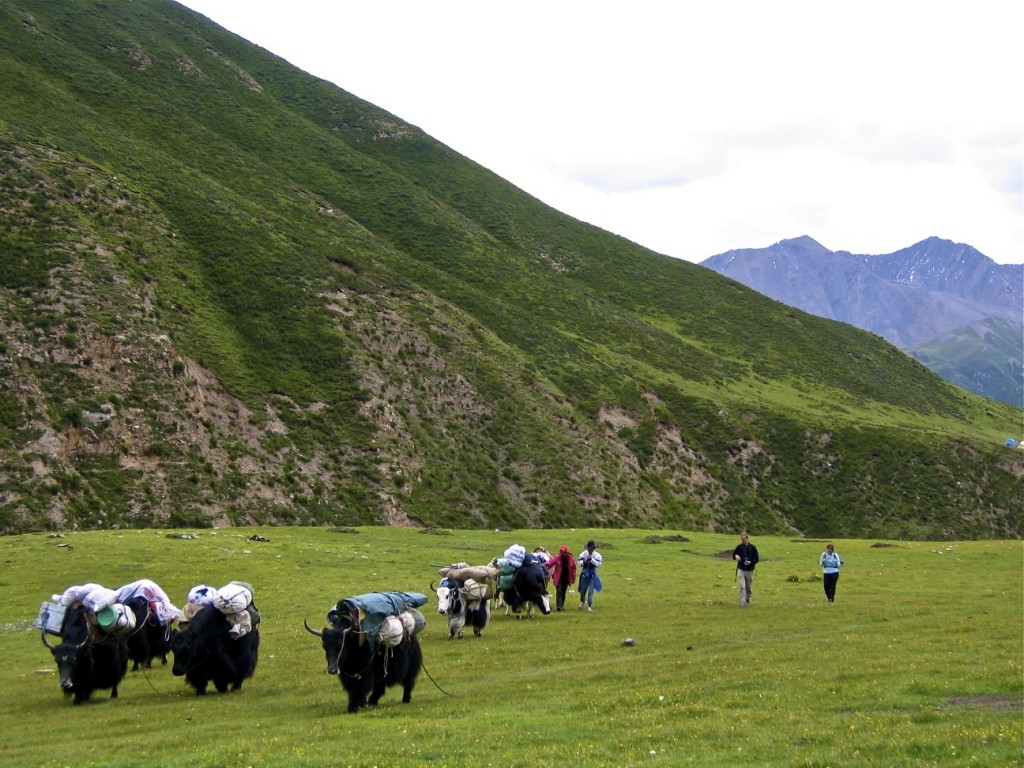
Foreigners on an organized trek around Amnye Machen using yaks

Small village near the Amnye Machen glaciers

Pilgrim tent at a high pass along the south side of Amnye Machen during a summer snowstorm.
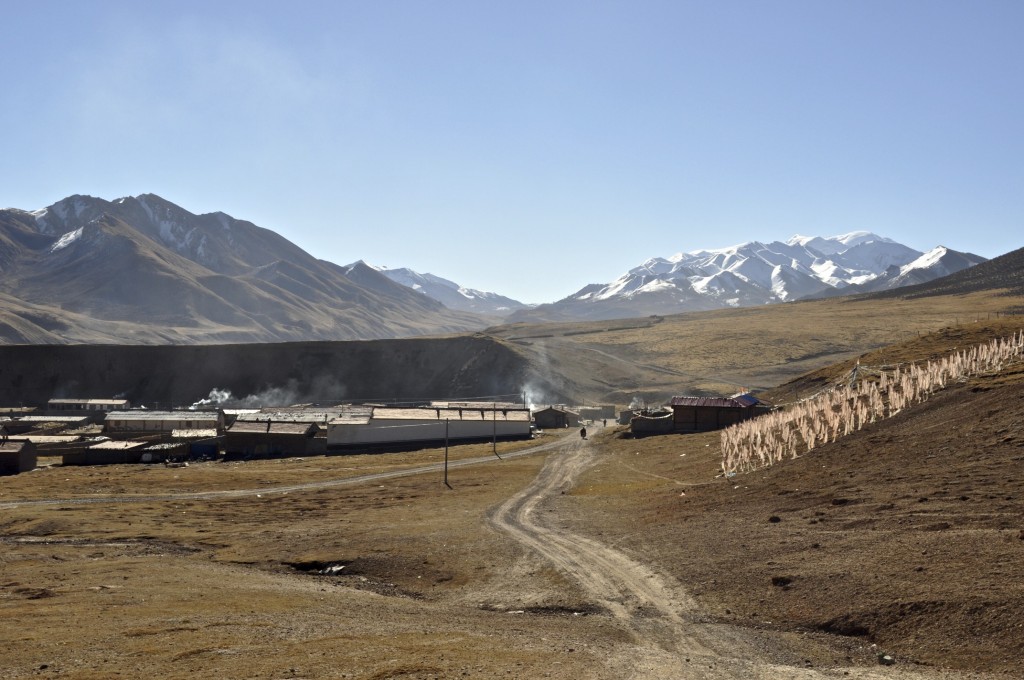
Village of Tawo Zholma, known in Chinese as Xia Dawu, with Amnye Machen in the background

Monastery along the Amnye Machen kora

Overlooking Chuwarna/Xue Shan village near the traditional starting point of the kora around Amnye Machen
Despite being the highest mountain in Amdo and being incredibly beautiful, Amnye Machen sees surprisingly few foreign travelers. There are no decent hotel options in the area and if you plan to do the trek, make sure you bring all of your own camping gear and food before arriving. Since most of this area is between 4200 and 4600 meters, the weather can be quite cool and even cold year round. Light snow flurries are common throughout summer while spring and fall can bring heavy snow (up to 1 meter deep). Winters are generally dry, but can easily reach -30C along the high passes.
If you are looking for an off-the-beaten-pathadventure, a trip to or trek around Amnye Machen is it! Feel free to email me for more information about this area at info@thelandofsnows.com
Losang བློ་བཟང་
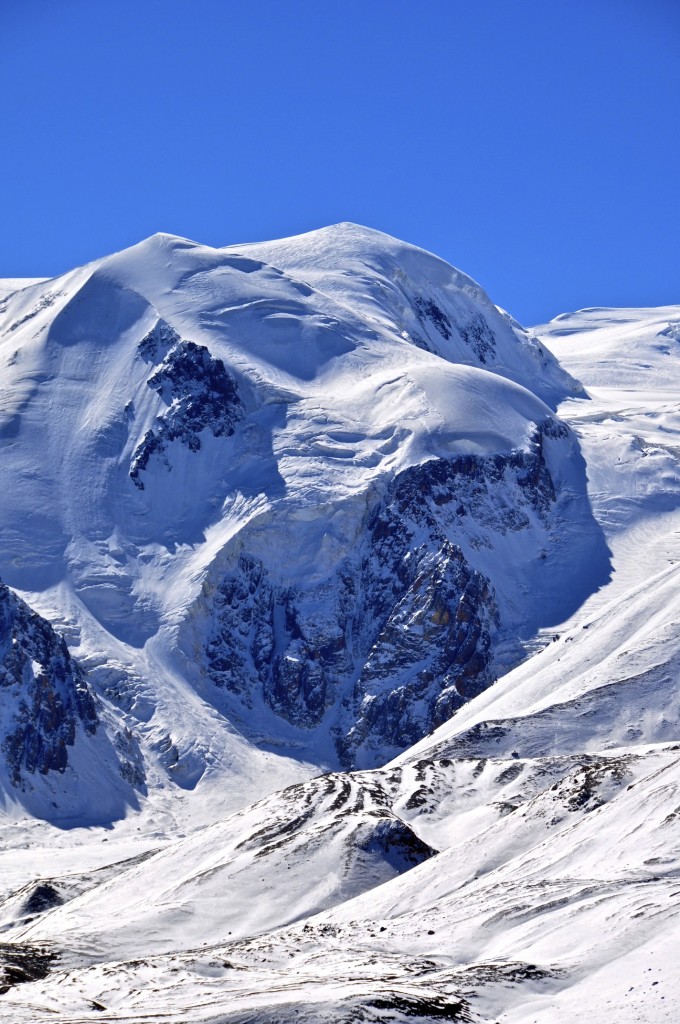
Along the north side of the mountain
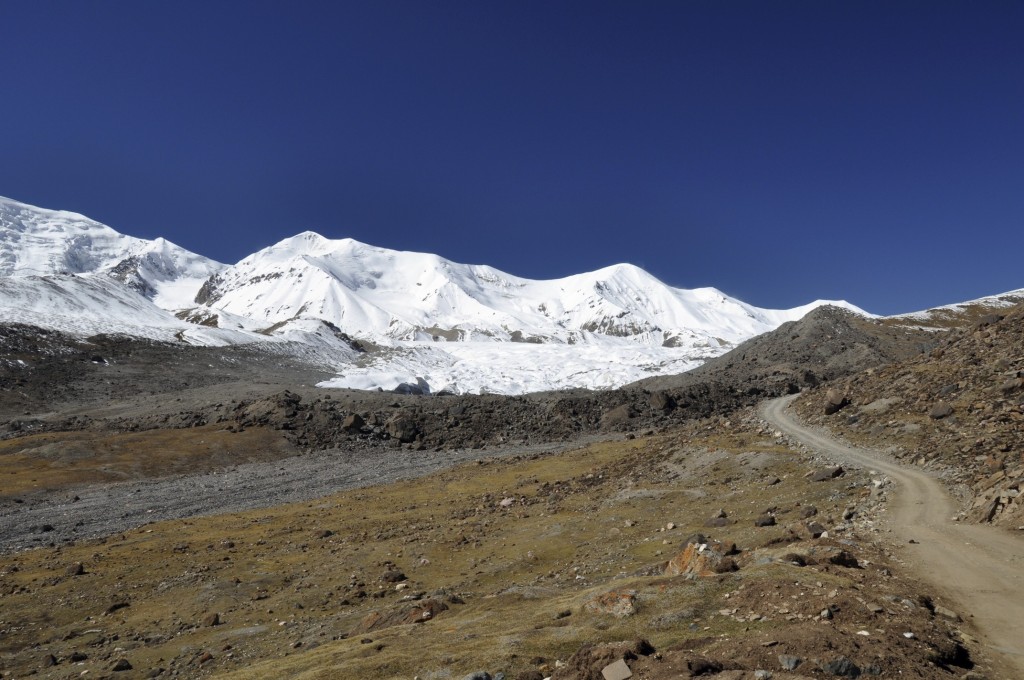
Road from Chuwarna/Xue Shan to the mountain

Northeast side of the mountain
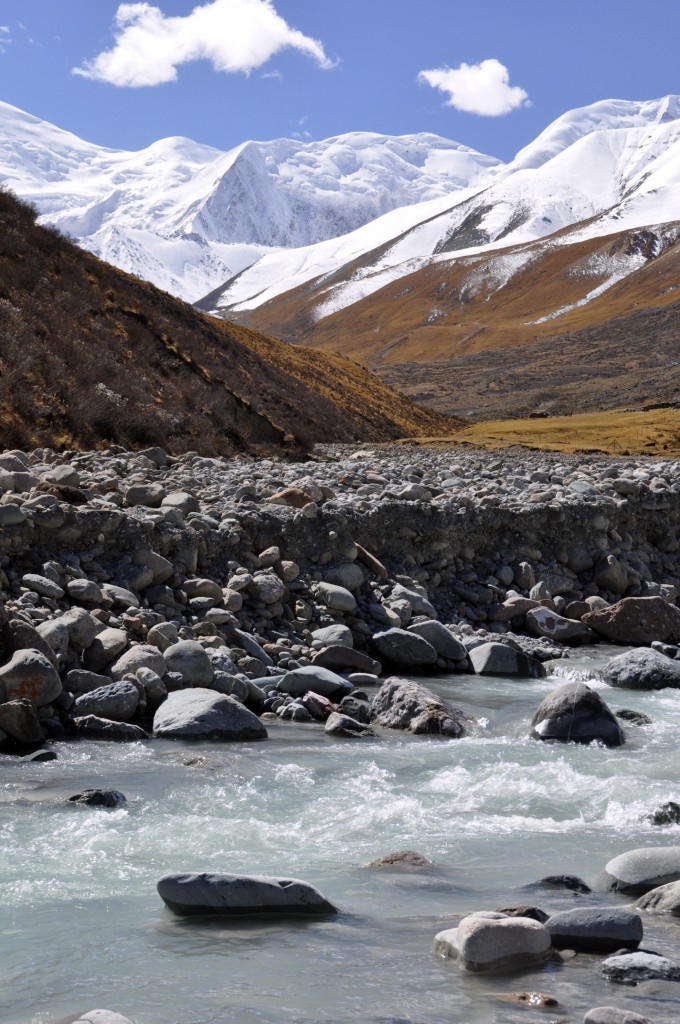
River coming straight from the glacier
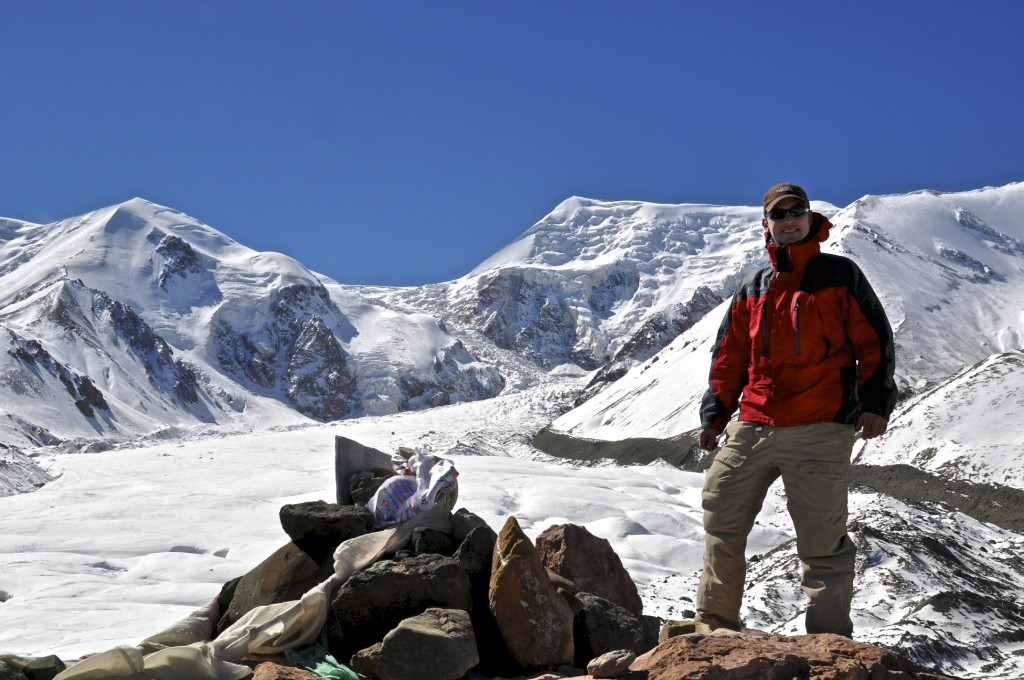
Me on the glaciers along the north side of the mountain
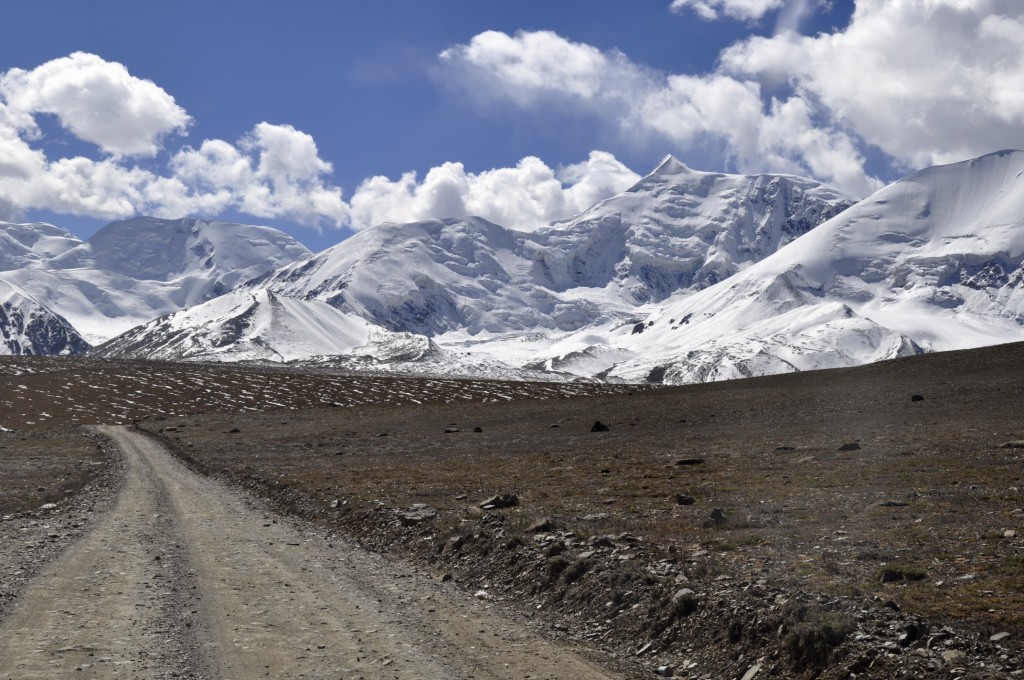
The road to the mountain from Tawo Zholma/Xia Dawu
